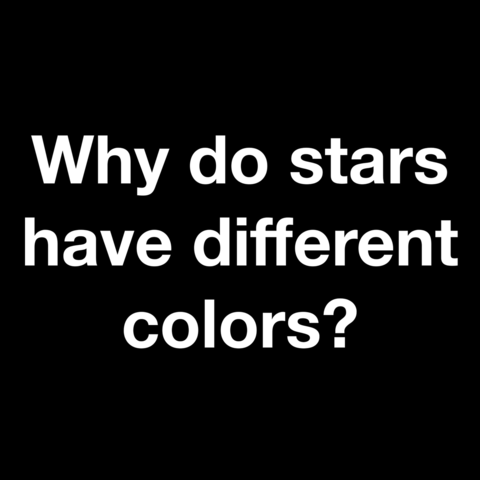MIngs🇦🇺 · @MarkIngs
377 followers · 1806 posts · Server aus.socialIt’s remarkable what astrophotographers can capture from their back yard. Lauren Hughes @WestwoodAstro took this photo of the Pinwheel Galaxy M101 from his driveway
Note he captured a supernova, which he has labelled SN 2023ixf
Original post https://astrodon.social/@WestwoodAstro/110437683717032817
#Astronomy #Astrophotography #ClearSkies #AstroTuesday #Astrodon #Astronomer #AstronomyMastodon
#astronomy #astrophotography #clearskies #astrotuesday #Astrodon #astronomer #astronomymastodon
Knowable Magazine · @KnowableMag
113 followers · 468 posts · Server mstdn.scienceEver since neutron stars were discovered, researchers have been using their unusual properties to probe our universe. But to accurately interpret some of the neutron stars’ signals, researchers must first understand what goes on inside them.
✍️ Katie McCormick
🔄 Republished: Scientific American
👉 Read now: https://www.scientificamerican.com/article/ultracold-gases-can-probe-neutron-star-guts/
#science
#sciencemastodon
#astronomy
#AstronomyMastodon
#KnowableMagazine
#Space
#SpaceMastodon
#NASA
#Science #sciencemastodon #astronomy #astronomymastodon #knowablemagazine #Space #SpaceMastodon #nasa
MIngs🇦🇺 · @MarkIngs
364 followers · 1670 posts · Server aus.socialTaking good photos in #AstroPhotography is an art. Here Michael Stillwell has captured the night sky in Timelapse over a still lake at twilight
Canon EOS Digital Rebel XSi, Canon10-22mm f/3.5-4.5 lens, 60 minutes!, ƒ/4.0, ISO 400
Photo credit Michael Stillwell
Original article https://www.popularmechanics.com/space/a25697/beginners-guide-to-astrophotography/
#Astronomy #AstroTuesday #NightSky #Astrodon #Astronomy #AstronomyMastodon #Timelapse
#astrophotography #astronomy #astrotuesday #nightsky #Astrodon #astronomymastodon #timelapse
M F ∆ W :verified: · @fitriabwahid
89 followers · 838 posts · Server mindly.socialStunning view of #Mount #Olympus on #Mars from space. The photo was captured by the #Hope probe of the United Arab Emirates.
#astronomy #astrophotography #astronomymastodon
#mount #olympus #mars #hope #astronomy #astrophotography #astronomymastodon
Reymond Aguinaldo · @mondinspace
718 followers · 1588 posts · Server mastodon.socialI’m just going to leave this here. #PaleBlueDotAnniversary
Learn more: https://solarsystem.nasa.gov/resources/536/voyager-1s-pale-blue-dot/
#SpaceMastodon #Spacedon #Space #AstronomyMastodon #Astrodon #Astronomy #ScienceMastodon #Sciencedon #Science #PaleBlueDot #Voyager #CarlSagan
#palebluedotanniversary #SpaceMastodon #spacedon #space #astronomymastodon #Astrodon #astronomy #sciencemastodon #sciencedon #science #palebluedot #voyager #carlsagan
Reymond Aguinaldo · @mondinspace
718 followers · 1585 posts · Server mastodon.socialThe spectrum of light emitted by a star also reveals information about its chemical composition, as different elements emit light at different wavelengths. By studying the colors of stars, astronomers can learn about the physical conditions in their atmospheres and interiors, and understand more about the universe as a whole.
Thread: 5/5
#SpaceMastodon #Spacedon #Space #AstronomyMastodon #Astrodon #Astronomy #ScienceMastodon #Sciencedon #Science #Stars
#SpaceMastodon #spacedon #space #astronomymastodon #Astrodon #astronomy #sciencemastodon #sciencedon #science #stars
Reymond Aguinaldo · @mondinspace
718 followers · 1584 posts · Server mastodon.socialIn between these two extremes are stars that are yellow, like our own Sun. The color of a star can also change over time as it ages and evolves. For example, a star may start off hot and blue, and then gradually cool and become redder as it evolves.
Thread: 4/x
#SpaceMastodon #Spacedon #Space #AstronomyMastodon #Astrodon #Astronomy #ScienceMastodon #Sciencedon #Science #Stars
#SpaceMastodon #spacedon #space #astronomymastodon #Astrodon #astronomy #sciencemastodon #sciencedon #science #stars
Reymond Aguinaldo · @mondinspace
718 followers · 1583 posts · Server mastodon.socialHotter stars have temperatures of tens of thousands of kelvins and emit more blue and ultraviolet light. These stars appear blue or blue-white. On the other hand, cooler stars have temperatures of just a few thousand kelvins and emit more red and infrared light. These stars appear red or orange.
Thread: 3/x
#SpaceMastodon #Spacedon #Space #AstronomyMastodon #Astrodon #Astronomy #ScienceMastodon #Sciencedon #Science #Stars
#SpaceMastodon #spacedon #space #astronomymastodon #Astrodon #astronomy #sciencemastodon #sciencedon #science #stars
Reymond Aguinaldo · @mondinspace
718 followers · 1582 posts · Server mastodon.socialThe color of a star is determined by its surface temperature. Stars are made up of hot gases, and the temperature of these gases determines what color the star appears to be. The temperature of a star is determined by its mass, age, and stage in its lifecycle.
Thread: 2/x
#SpaceMastodon #Spacedon #Space #AstronomyMastodon #Astrodon #Astronomy #ScienceMastodon #Sciencedon #Science #Stars
#SpaceMastodon #spacedon #space #astronomymastodon #Astrodon #astronomy #sciencemastodon #sciencedon #science #stars
Reymond Aguinaldo · @mondinspace
718 followers · 1581 posts · Server mastodon.socialCame across a thread on Twitter that asked the question “Why do stars have different colors?”
To answer simply: The color of a star is determined by its temperature. Hotter stars emit more blue light, while cooler ones give off red & orange hues. This is due to the way that different elements in a star's atmosphere emit light.
More details in thread: 1/x
#SpaceMastodon #Spacedon #Space #AstronomyMastodon #Astrodon #Astronomy #ScienceMastodon #Sciencedon #Science #Stars
#SpaceMastodon #spacedon #space #astronomymastodon #Astrodon #astronomy #sciencemastodon #sciencedon #science #stars
Reymond Aguinaldo · @mondinspace
716 followers · 1574 posts · Server mastodon.socialExciting to think about the ways science fiction's imaginative ideas could become a reality in future missions to #Mars.
Stream the latest episode of #NASA’s “Houston We Have a Podcast” to learn about the interesting ideas being considered for future Mars missions.
Transcript/listen here: https://www.nasa.gov/johnson/HWHAP/mars-ep2-concepts-near-science-fiction
#SpaceMastodon #Spacedon #Space #AstronomyMastodon #Astrodon #Astronomy #ScienceMastodon #Sciencedon #Science #Future
#mars #nasa #SpaceMastodon #spacedon #space #astronomymastodon #Astrodon #astronomy #sciencemastodon #sciencedon #science #future
Reymond Aguinaldo · @mondinspace
711 followers · 1573 posts · Server mastodon.socialHave you ever wondered why the sunset on #Mars appears bluish? It's all because of the fine dust particles in the #Martian atmosphere. These particles scatter sunlight in a similar way to how #Earth's atmosphere scatters sunlight to create a blue sky.
Info: https://solarsystem.nasa.gov/news/925/what-does-a-sunrise-sunset-look-like-on-mars/
#SpaceMastodon #Spacedon #Space #AstronomyMastodon #Astrodon #Astronomy #ScienceMastodon #Sciencedon #Science #NASA #Sunsets #Planets
#mars #martian #earth #SpaceMastodon #spacedon #space #astronomymastodon #Astrodon #astronomy #sciencemastodon #sciencedon #science #nasa #sunsets #planets
Reymond Aguinaldo · @mondinspace
710 followers · 1570 posts · Server mastodon.socialThread: 3/3
#Artemis will enable astronauts to discover new areas of the #Moon's surface. In order to ensure safety for astronauts during trips to the Moon, #Mars and beyond, it's crucial that we comprehend the impact of space travel on human physiology: https://www.nasa.gov/hrp/bodyinspace
#SpaceMastodon #Spacedon #Space #AstronomyMastodon #Astrodon #Astronomy #ScienceMastodon #Sciencedon #Science #Artemis #MoonMissions
#artemis #moon #mars #SpaceMastodon #spacedon #space #astronomymastodon #Astrodon #astronomy #sciencemastodon #sciencedon #science #moonmissions
Reymond Aguinaldo · @mondinspace
710 followers · 1569 posts · Server mastodon.socialThread: 2/x
The #ArtemisIII mission, set for 2025, will be humanity's first time back on the lunar surface in over half a century. This mission will make history by sending the first people to explore the area near the South Pole of the #Moon.
Learn more: https://www.nasa.gov/feature/artemis-iii
#SpaceMastodon #Spacedon #Space #AstronomyMastodon #Astrodon #Astronomy #ScienceMastodon #Sciencedon #Science #Artemis #Artemis3 #MoonMissions
#artemisiii #moon #SpaceMastodon #spacedon #space #astronomymastodon #Astrodon #astronomy #sciencemastodon #sciencedon #science #artemis #artemis3 #moonmissions
Reymond Aguinaldo · @mondinspace
710 followers · 1568 posts · Server mastodon.socialThread: 1/x
#NASA #Michoud is currently working on the #SLS for #ArtemisIII. The liquid hydrogen and liquid oxygen tanks, engine section, forward skirt, and intertank sections of the core stage, have all achieved significant progress recently.
Learn more about Artemis III: https://www.nasa.gov/feature/artemis-iii
#SpaceMastodon #Spacedon #Space #AstronomyMastodon #Astrodon #Astronomy #ScienceMastodon #Sciencedon #Science #Artemis #Artemis3 #MoonMissions
#nasa #michoud #sls #artemisiii #SpaceMastodon #spacedon #space #astronomymastodon #Astrodon #astronomy #sciencemastodon #sciencedon #science #artemis #artemis3 #moonmissions
Reymond Aguinaldo · @mondinspace
710 followers · 1568 posts · Server mastodon.socialThread: 1/x
#NASA #Michoud is currently working on the #SLS for #ArtemisIII. The liquid hydrogen and liquid oxygen tanks, engine section, forward skirt, and intertank sections of the core stage, have all achieved significant progress recently.
Learn more about Artemis III: https://www.nasa.gov/feature/artemis-iii
#SpaceMastodon #Spacedon #Space #AstronomyMastodon #Astrodon #Astronomy #ScienceMastodon #Sciencedon #Science #Artemis #Artemis3 #MoonMissions
#nasa #michoud #sls #artemisiii #SpaceMastodon #spacedon #space #astronomymastodon #Astrodon #astronomy #sciencemastodon #sciencedon #science #artemis #artemis3 #moonmissions
tricia, queen of house cyberly :verified_paw: :donor: · @triciakickssaas
2025 followers · 537 posts · Server infosec.exchangehey #Space and #Astronomy peeps:
my bf and i are really into stargazing, certainly amateur. i’m considering getting him a telescope as a surprise but i have nowhere to start and have no idea what to be looking for. nothing too extravagant - just enough for two romantics to see the stars.
any pointers super appreciated!
#SpaceMastodon #astronomymastodon #stars #planets #telescope
#space #astronomy #SpaceMastodon #astronomymastodon #stars #planets #telescope
Reymond Aguinaldo · @mondinspace
710 followers · 1559 posts · Server mastodon.socialThe #JamesWebbSpaceTelescope has spotted a luminous disc of material remaining from the formation of a planet around a nearby star named AU Microscopii (or AU Mic).
More information: https://www.nasa.gov/feature/goddard/2023/new-webb-image-reveals-dusty-disk-like-never-seen-before
#SpaceMastodon #Spacedon #Space #AstronomyMastodon #Astrodon #Astronomy #ScienceMastodon #Sciencedon #Science #JWST #Webb
#jameswebbspacetelescope #SpaceMastodon #spacedon #space #astronomymastodon #Astrodon #astronomy #sciencemastodon #sciencedon #science #jwst #webb
Reymond Aguinaldo · @mondinspace
710 followers · 1557 posts · Server mastodon.socialThe #JamesWebbSpaceTelescope took a beautiful picture of the star-forming region NGC 346, a young cluster of stars located 200,000 light-years away, which could give us a glimpse of the early universe.
More information: https://www.nasa.gov/feature/goddard/2023/nasa-s-webb-uncovers-star-formation-in-cluster-s-dusty-ribbons
#SpaceMastodon #Spacedon #Space #AstronomyMastodon #Astrodon #Astronomy #ScienceMastodon #Sciencedon #Science #JWST #Webb #StarClusters
#jameswebbspacetelescope #SpaceMastodon #spacedon #space #astronomymastodon #Astrodon #astronomy #sciencemastodon #sciencedon #science #jwst #webb #StarClusters
Reymond Aguinaldo · @mondinspace
709 followers · 1555 posts · Server mastodon.socialThe #JamesWebbSpaceTelescope has successfully identified its first #Exoplanet, known as LHS 475 b. This planet is similar in size to #Earth and has a rocky composition. It's also possible that it has an atmosphere.
More information: https://www.nasa.gov/feature/goddard/2023/nasa-s-webb-confirms-its-first-exoplanet
Photo 1: LHS 475 b (illustration)
#SpaceMastodon #Spacedon #Space #AstronomyMastodon #Astrodon #Astronomy #ScienceMastodon #Sciencedon #Science #JWST #Webb #Exoplanets
#jameswebbspacetelescope #exoplanet #earth #SpaceMastodon #spacedon #space #astronomymastodon #Astrodon #astronomy #sciencemastodon #sciencedon #science #jwst #webb #exoplanets















